North Cyprus is an incredible tourism destination that's positively full to bursting with historic attractions, beautiful scenery, interesting towns and cities, great accommodation and friendly people.
Despite a tense political situation (which we encourage you to read about), North Cyprus is a safe, hospitable and enjoyable place for tourists to visit. It has a treasure trove of riches ready to explore and currently, there are very few other tourists to share it with.
If you find this post useful, please consider buying us a coffee! We'd really appreciate it!
At A Glance
Use our helpful table of contents to jump ahead to a section of this post that interests you most.
- Things to know about attractions in North Cyprus
- How to get between sights in North Cyprus
- Capital: Things To See in Lefkoşa
- Central: Things To See in Girne
- West: Things To See in Güzelyurt
- North East: Things To See in İskele
- South East: Things To See in Gazimağusa
- Plan & Book your visit to North Cyprus
Disambiguation: In this post, I will refer to land to the north and south of the UN buffer zone (or ‘Green Line‘) that divides the island. In order for readers to easily differentiate between the two, I will refer to the land to the north, the de facto Turkish Republic of Northern Cyprus, as North Cyprus and the land to the south, the de jure Republic of Cyprus, as Southern Cyprus.
[htt-affiliate]
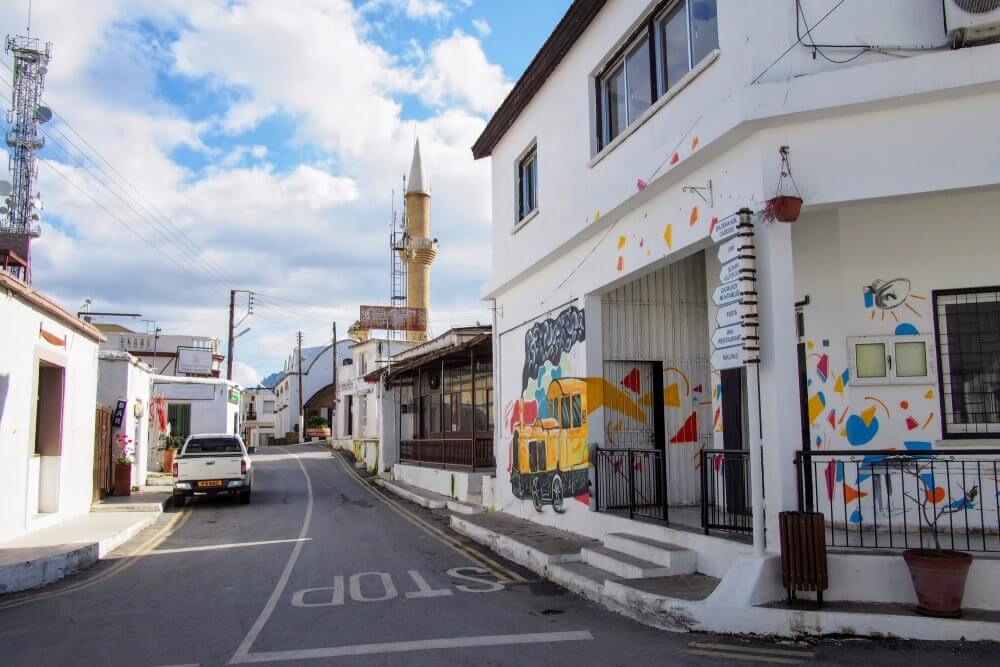
Things To Know About Attractions in North Cyprus
While each attraction in North Cyprus is different, we did find a few similarities that are worth knowing.
Entrance Fees
Entrance fees are nominal. In most cases, you'll be very surprised as to how cheap it is to visit these incredible world-class sights. We're talking 2-3 GBP/EUR/USD per person.
You're free to roam
You won't find many ropes or barriers at historic sights in North Cyprus. On the contrary, we were pretty surprised to be able to walk wherever we liked, even on top of precious roman mosaics.
Take Care
While it seems there has been some investment in the upkeep and maintenance of the historic monuments and buildings themselves, the grounds surrounding them tend to have deteriorated a bit over time. Pathways and steps can often be cracked and crumbling and they therefore require a bit of extra care when navigating them.
No Official Websites
None of the attractions featured on this page have official websites representing them, therefore primary sources of information are scarce. With this in mind, we've tried our very best to ensure everything on this page is accurate.
Opening Times
If you see published opening times for an attraction you're intending on visiting, view them more as a suggestion than a cast iron guarantee. Opening times depend on demand and staff availability and can change without notice. If you can, call ahead to check or have backup plans to avoid disappointment.
Where Is Everybody?
Thanks to the rather awkward and longstanding political situation, North Cyprus doesn't enjoy the roaring tourism it deserves. You therefore might be slightly bewildered to find you have Roman amphitheatres and Venetian castles entirely to yourself. This is particularly the case in the low season (Winter), when tourism dries up almost entirely. Enjoy the solitude while it lasts.
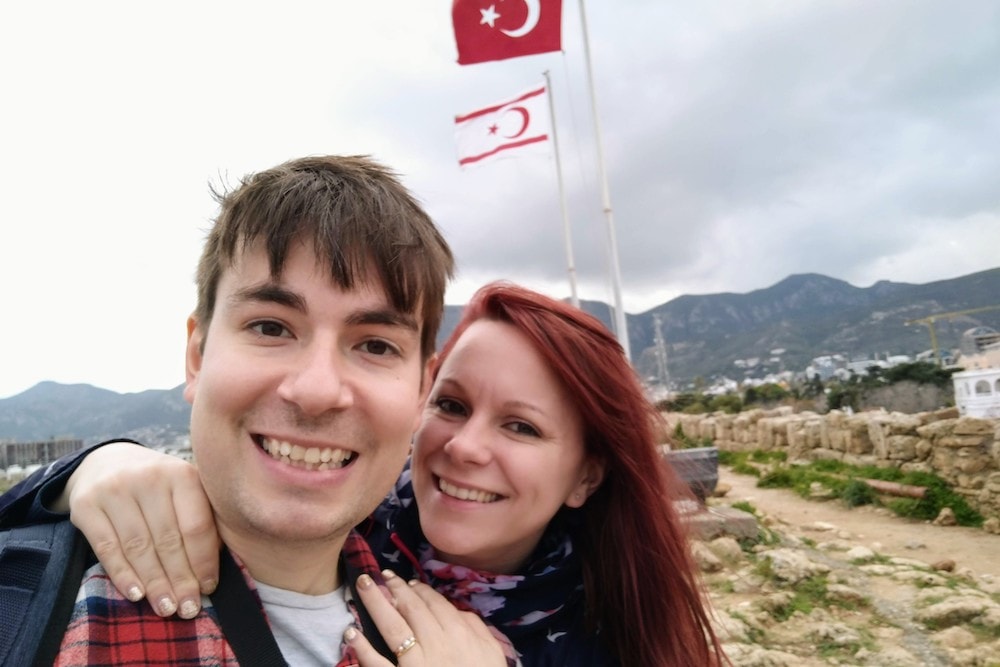
How to get between sights in North Cyprus
Many of the most incredible sights in North Cyprus are not near major towns and cities and are therefore not easily accessible by public transport. Whilst there is a bus network, the buses operate in a different fashion to what you might be used to and don't go everywhere.
That said, we did use the buses to get between our accommodation and Kyrenia and between Kyrenia and Lefkoşa/Nicosia and they did get us safely and swiftly to our destinations. We've written about how to use the buses in North Cyprus is another post.
To ensure you can see everything you want to see, we highly recommend you hire a car. We have plenty of advice on hiring a car in North Cyprus in our other post; North Cyprus: 15 Essential Things To Know Before You Go.
Whenever we are thinking about hiring a car, we always start our search on Discover Cars. We managed to find a great deal with a company called Pacific. The process was informal, the car showed up when they said it would, so assuming you're happy with the price, we'd recommend them.
Alternatively, you can go on our pre-arranged tour of North Cyprus. TourRadar have a selection of tours available.
[htt-plan-box location="North Cyprus"]
So, let's now dig in and explore this fabulous slice of the Cypriot isle. To make things slightly easier, we've separated the sights and attractions into geographic zones. Depending on where you're staying and you're willingness to zip about a bit, you can pretty much explore all of the sights in each zone in a day.
Place Names: Since Cyprus has two main influential ethnic groups, many towns and cities in North Cyprus are known by two names, one of Greek origin, the other of Turkish. In this post, where there are two common variants, both will be shown in the format of 'Turkish/Greek'.
Capital: Things To See in Lefkoşa
Lefkoşa, or Nicosia as it's known to Greek Cypriots, is the capital city of Cyprus. It is the world's only divided capital city, split down the centre by a UN buffer zone. Visiting the city is safe and very much worth it. Both sides of the city offer plenty to see and do and the buffer zone itself is fascinating.
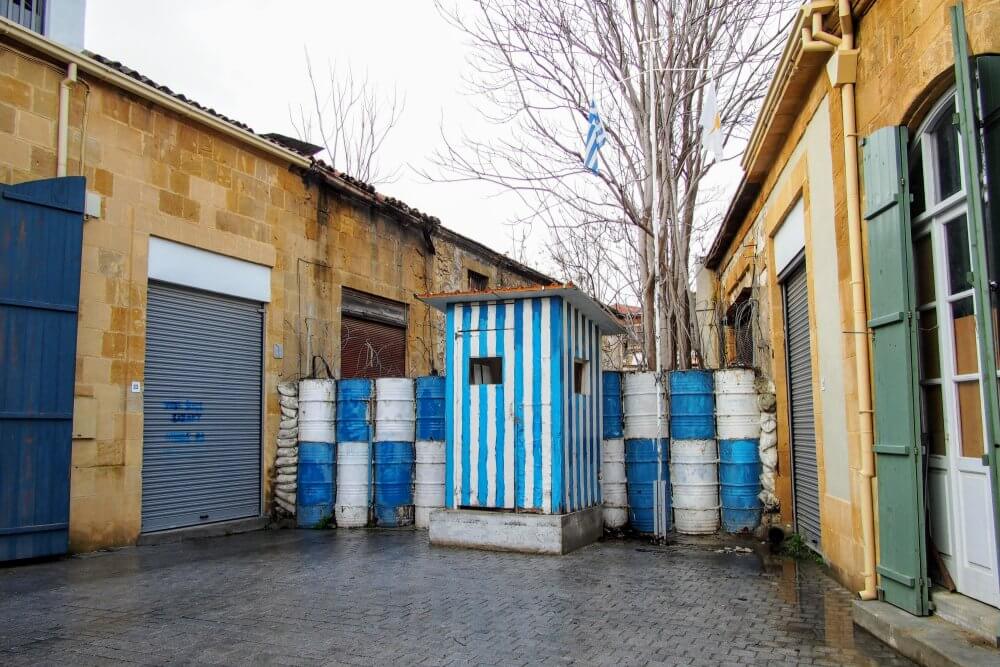
The Green Line: Nothing Else Quite Like It
The island of Cyprus is divided into two legislative areas by the UN Buffer Zone, a 180km long demilitarised zone known as the 'Green Line'.
Outside of Lefkoşa/Nicosia, the presence of the Green Line is marked only by signs and low-key checkpoints operated by Turkish Cypriot, Greek Cypriot and British forces. Inside the capital however, it's a very different story.
Here, barbed wire and guarded road blocks protect an area few have the right to enter, containing derelict buildings and litter-strewn wasteland. Walking along the periphery of the line is both fascinating and depressing in equal measure. Normal life continues on both sides of the partition as best it can, but it's difficult not to notice the armed guards and graffiti pleading for reconciliation and peace.
You can easily cross the line in a couple of places in the city provided you have your passport. It will be checked twice by guards representing each of the two opposing sides. The most common crossing point for tourists is the Ledra Street crossing, but we think the less-frequented crossing at Markou Drakou is significantly more interesting. Here you'll find a section of the buffer zone you can freely wander into and you'll also be able to stop for a coffee at the Home For Co-ooperation (see below).
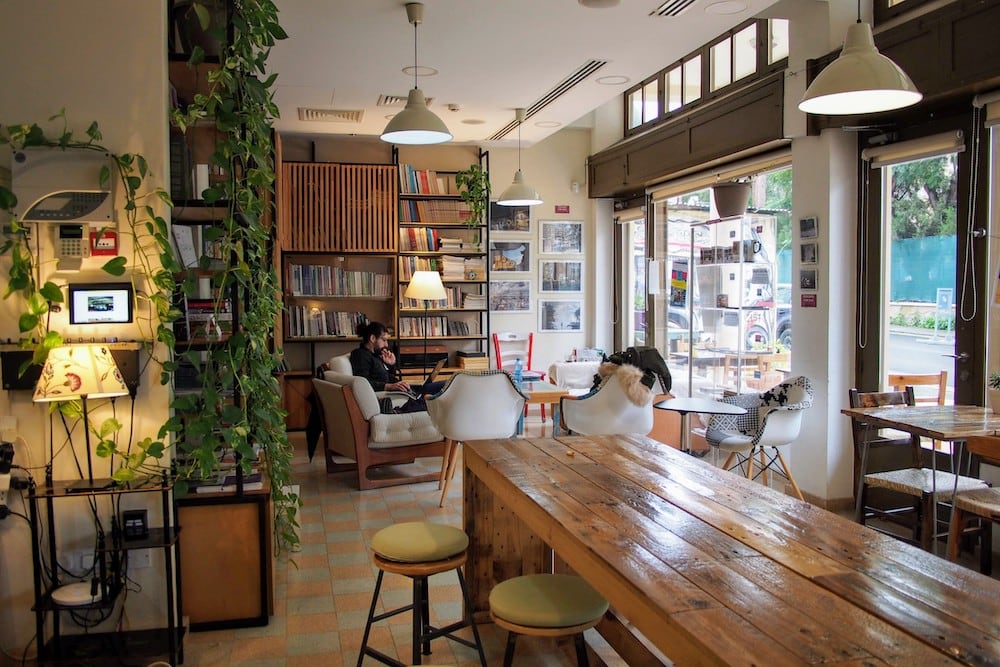
Home For Co-operation: Remarkable Cafe & Venue Inside the Green Line
Address: Markou Drakou 28, Nicosia
Save to Google Maps | View on Tripadvisor | View Website
Inside the UN Buffer Zone, opposite the former Ledra Palace Hotel which now serves as the UN headquarters, is a unique community centre. Housing a fabulous cafe and multi-functional spaces for events and meetings, the centre's soul aim is to provide a safe space where separated communities can come together and share in one another's culture.
If you're passing by (and you should), drop in for a coffee and a bite to eat, if only to show your support that such a wonderful place exists in an area of such strong divisions. If you're lucky, your visit might coincide with one of the many events that are held here.
Pro-tip: Sit by the window if you can. Blue-beret-wearing troops from the UN peacekeeping forces routinely pass by and watching them as you sip on your latte is a strange, if slightly macabre, novelty.
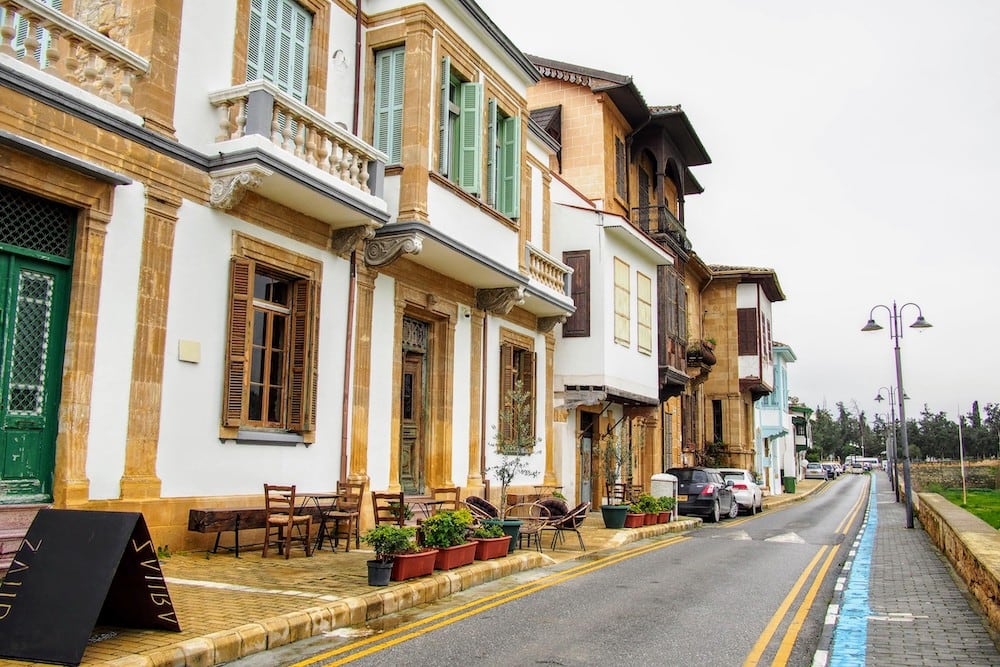
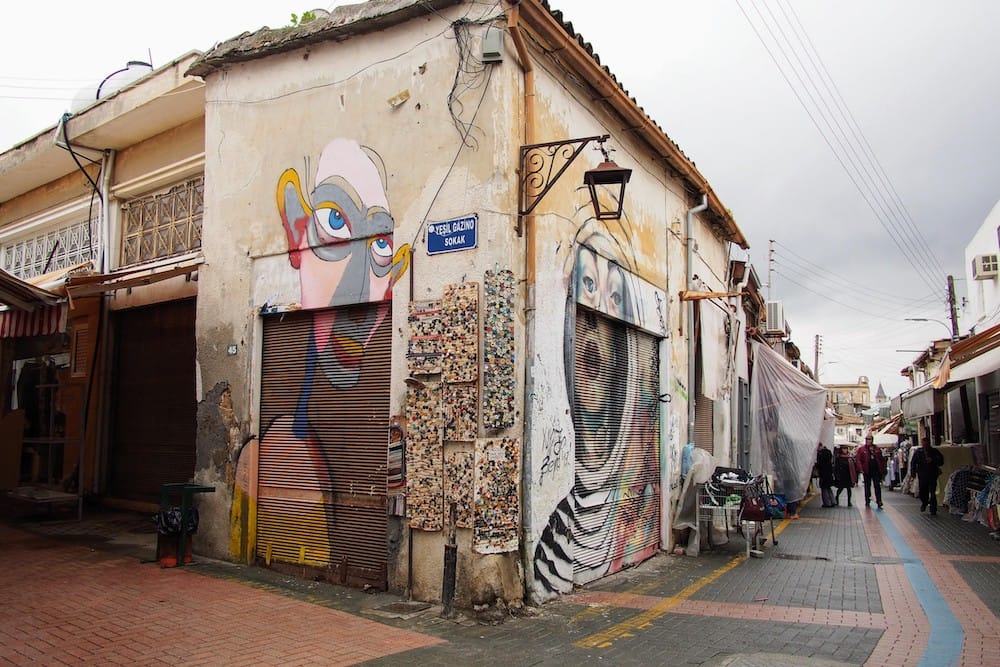
Lefkoşa Self-Guided Walking Tour: Follow the Blue Line
To take in all of the main sights on the Turkish side of the capital, simply follow the blue line. Local authorities have very helpfully painted a thick blue line on the ground which runs past points of interest throughout the city.
In some areas, road resurfacing has meant sections of the line have disappeared, so some creativity is required to find your way. With a bit of perseverance, we managed to stick to the route without too much fuss.
We picked up the blue line from the Ledra Palace crossing on Markou Drakou. Once you've crossed the UN Buffer Zone, take the first right onto Sarayönü Sk (with Khora Kitap Cafe across the road on your left) and turn right again. You should see the blue line start from here.
The scene at this spot is quite remarkable - a row of well-kept town houses face into a wide dugout, inside which you'll see UN watch towers.
[htt-plan-box location="North Cyprus"]
Central: Things To See in Girne
Girne/Kyrenia is a coastal city and, arguably, at the heart of the North Cyprus tourism industry. Photos of its harbour and castle are often used in tourism brochures. Both inside and outside the city limits are a number of great hotels, making the city and area surrounding it a great base for exploring the rest of the island territory.
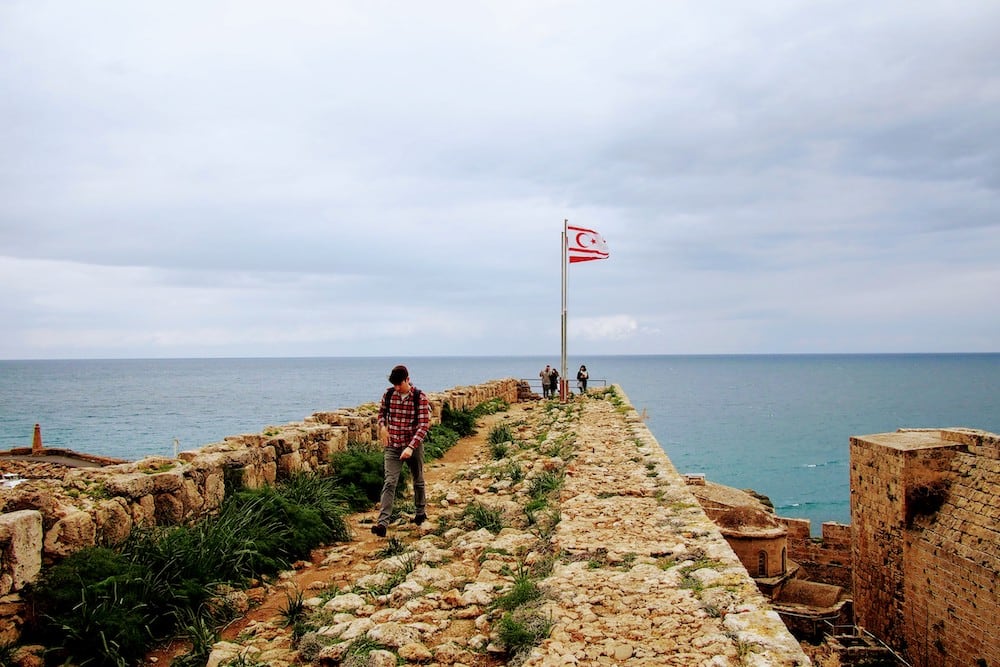
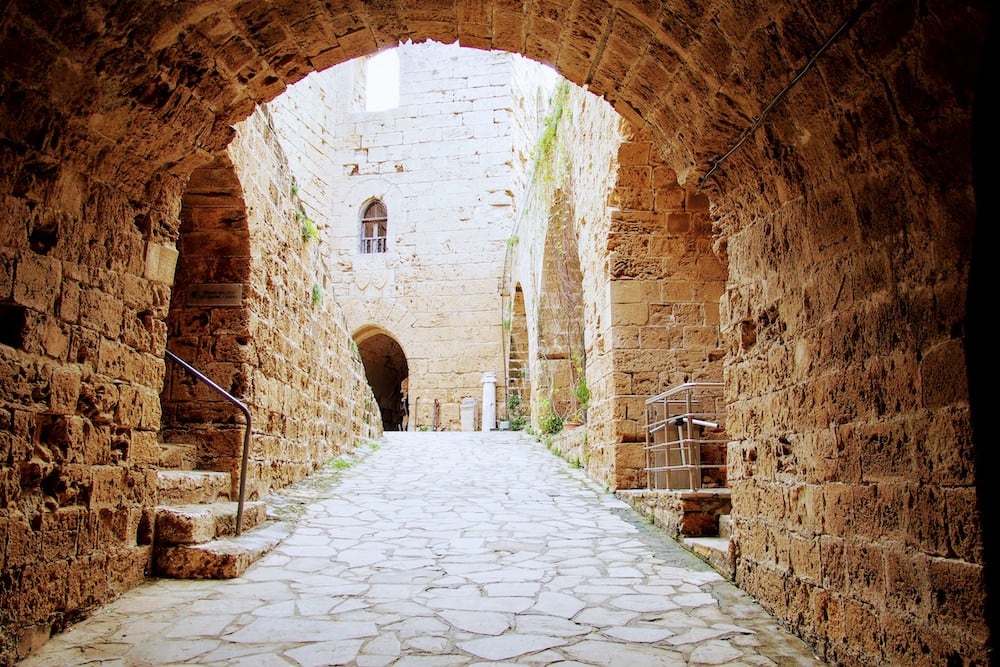

Kyrenia Castle: Pristine 16th Century Venetian Castle
Address: Küpdemir Sk, Girne 99300
Save to Google Maps | View on Tripadvisor
Just to the east of Kyrenia Harbour is a 16th century Venetian castle. Kyrenia Castle (Turkish: Girne Kalesi) is in remarkable condition, particularly the exterior fortifications which look like they were constructed fairly recently. As with most of the attractions listed on this page, you're free to roam pretty much wherever you like.
A walk along the exterior walls is good fun and offers some great views of the harbour and city centre below. Don't forget to visit the Shipwreck Museum, exhibiting the remains of a Greek merchant ship and its cargo from the 4th century. Once you're done exploring, there's a charming little cafe inside the courtyard which serves simple sandwiches, mezze and Turkish tea.
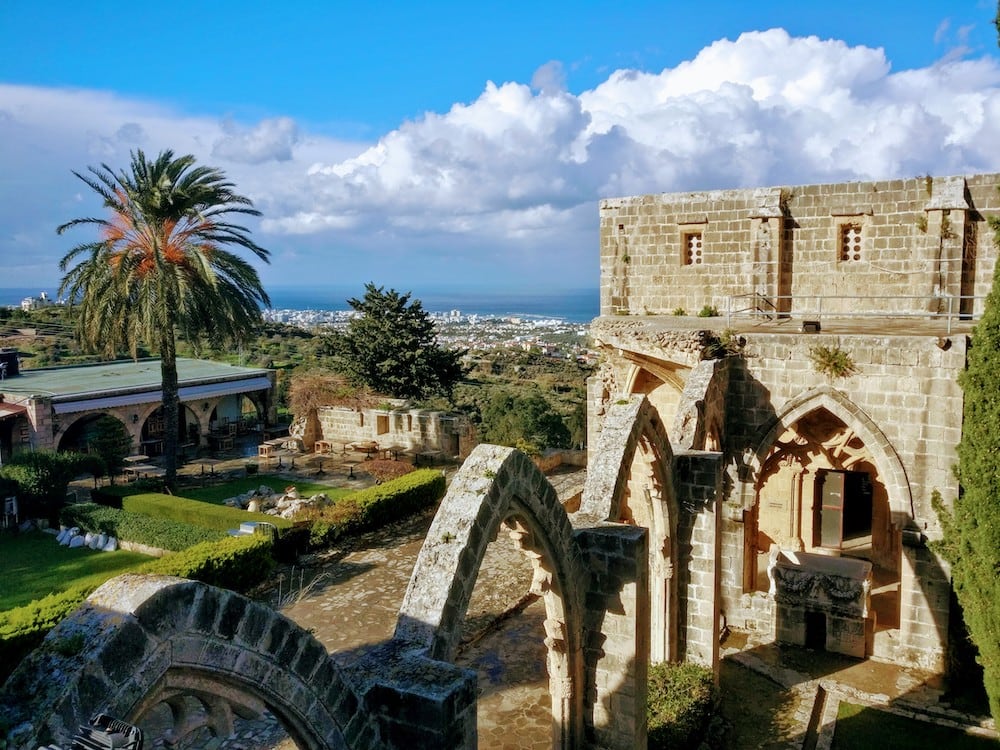
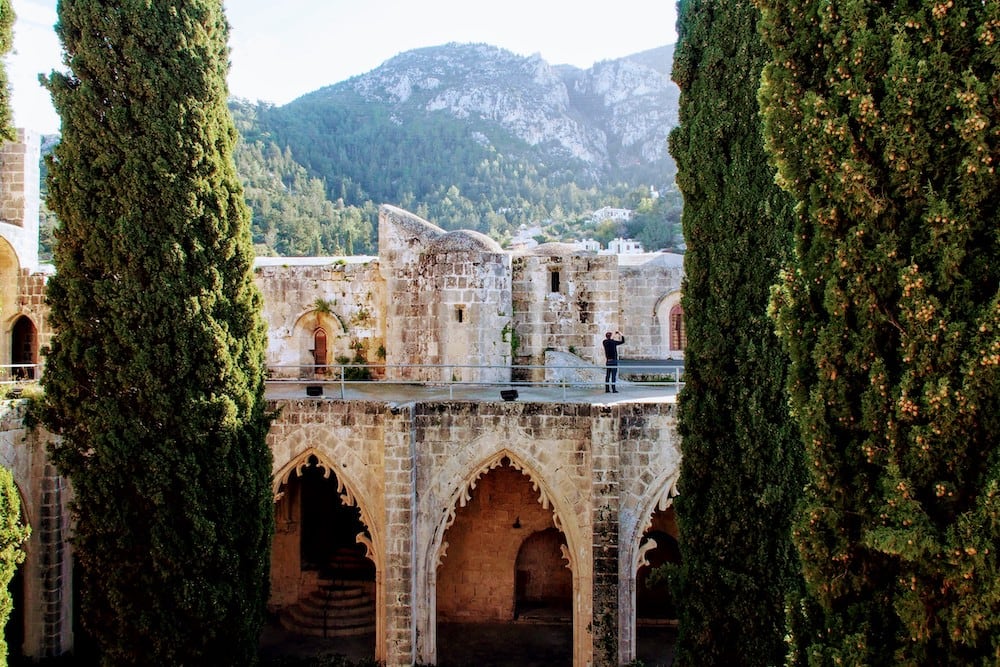
Bellapais Monastery: Ruins of a 13th Century Monastery
Address: Beylerbeyi 99320
Save to Google Maps | View on Tripadvisor
The ruins of a 13th century monastery can be explored in the village of Bellapais, around 5km to the southeast of Kyrenia. The setting, between mountains and the coastline is really lovely with palm trees planted amongst the ruins. Thanks to the site being situated 220 metres above sea level, there are fabulous views of the surrounding area and out across the sea towards Turkey to be enjoyed.
Be sure to explore the monastery thoroughly, particularly the roof top. There's also a museum and cafe on site.
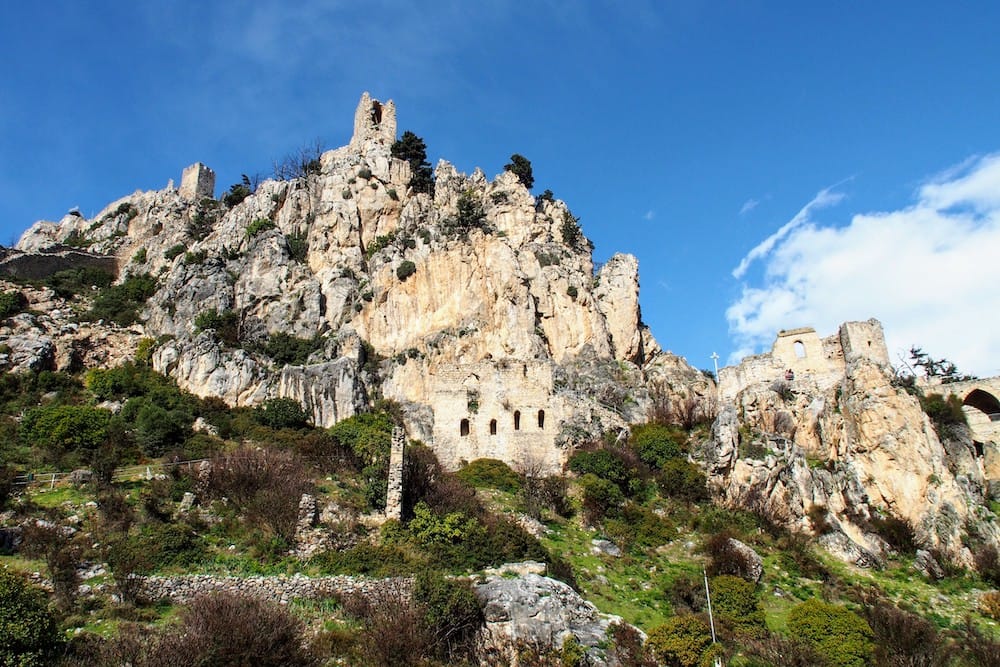
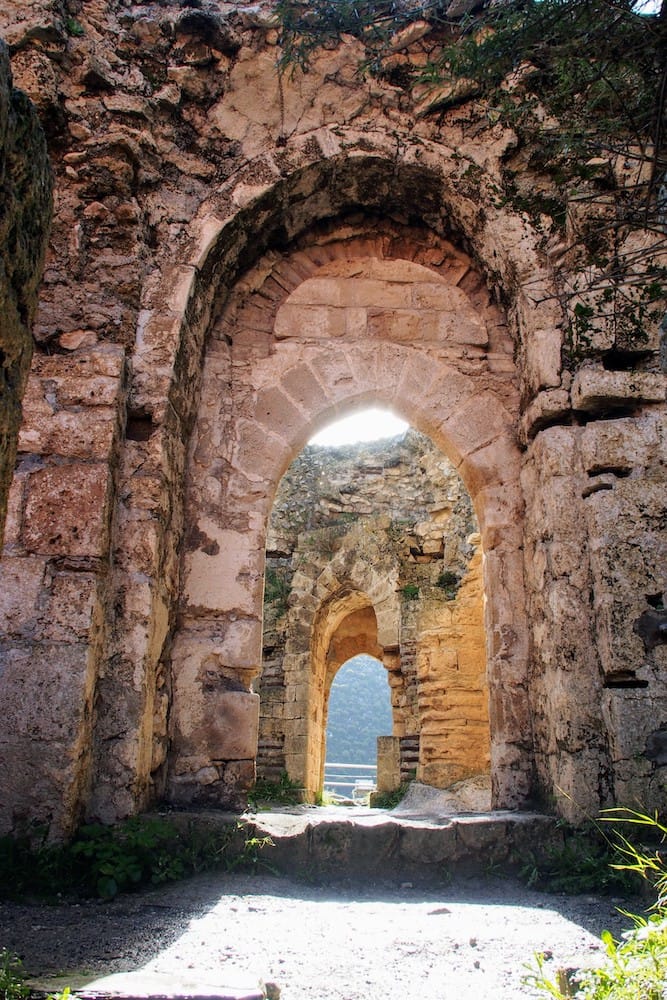
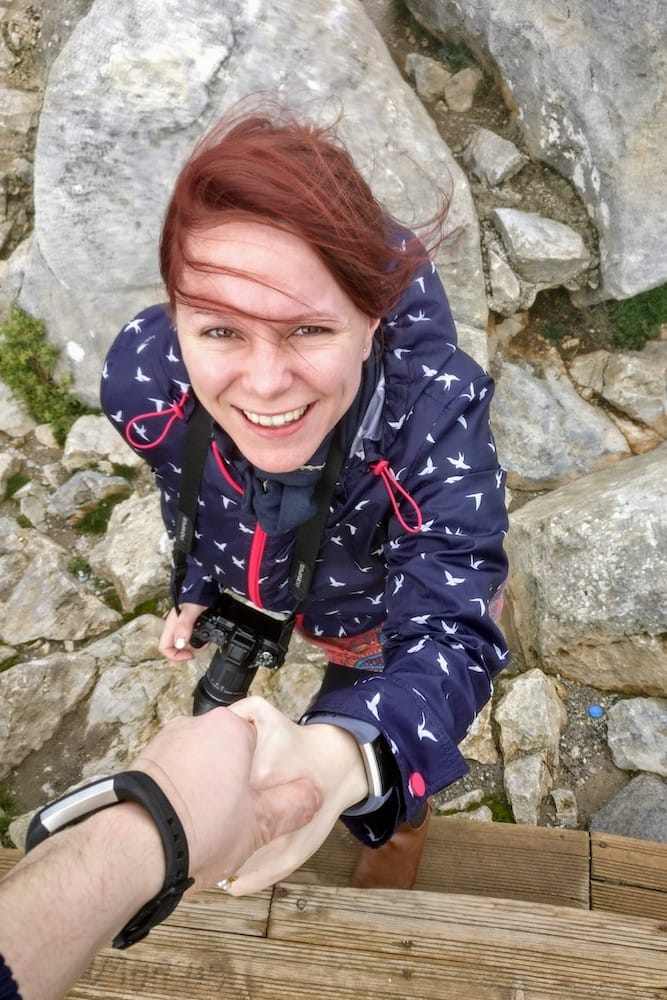
Saint Hilarion Castle: Dramatic 11th Century Castle in the Mountains
Address: Girne 99320
Save to Google Maps | View on Tripadvisor
Photos of Saint Hilarion Castle are often included in publicity for North Cyprus and it's really easy to see why. As you wind your way up the mountain pass, the castle stays hidden. It's only as you approach the car park that the castle suddenly reveals itself, merged almost impossibly into the side of the mountain in the most dramatic fashion.
Visiting Saint Hilarion is absolutely unmissable. Despite the best efforts of the Venetians, much of the castle is in tact and it is a truly breathtaking sight to behold from every single angle. Additionally, thanks to its mountaintop location, the views of the Mediterranean coastline, Girne/Kyrenia and beyond are jaw-dropping.
Pro-tips: Make sure you're wearing sturdy shoes and take a wind-breaking coat/jacket with you. There are a significant number of steps between the three parts of the castle and it felt noticeably colder and windier when we were there. Additionally, keep an eye out for resident mountain goats clinging precariously to the mountainside as they graze.
[htt-plan-box location="North Cyprus"]
West: Things To See in Güzelyurt
The western end of North Cyprus feels different to the rest of the territory. Fewer foreigners head in this direction, so you may notice locals will take much more on an interest in your presence. Fear not however, as Cypriots are friendly folk and you'll always be welcomed.
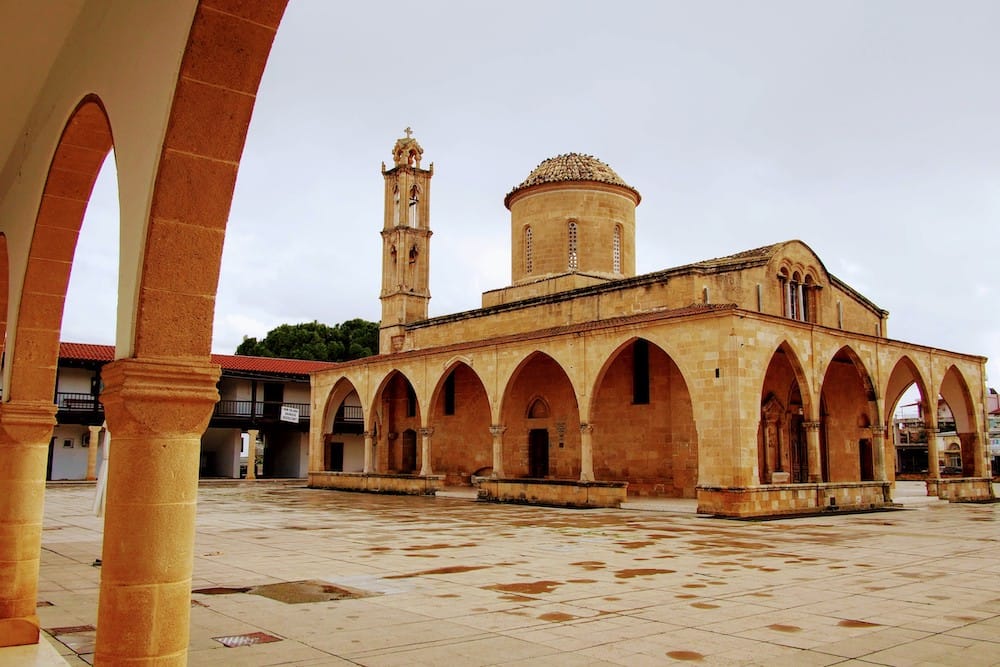
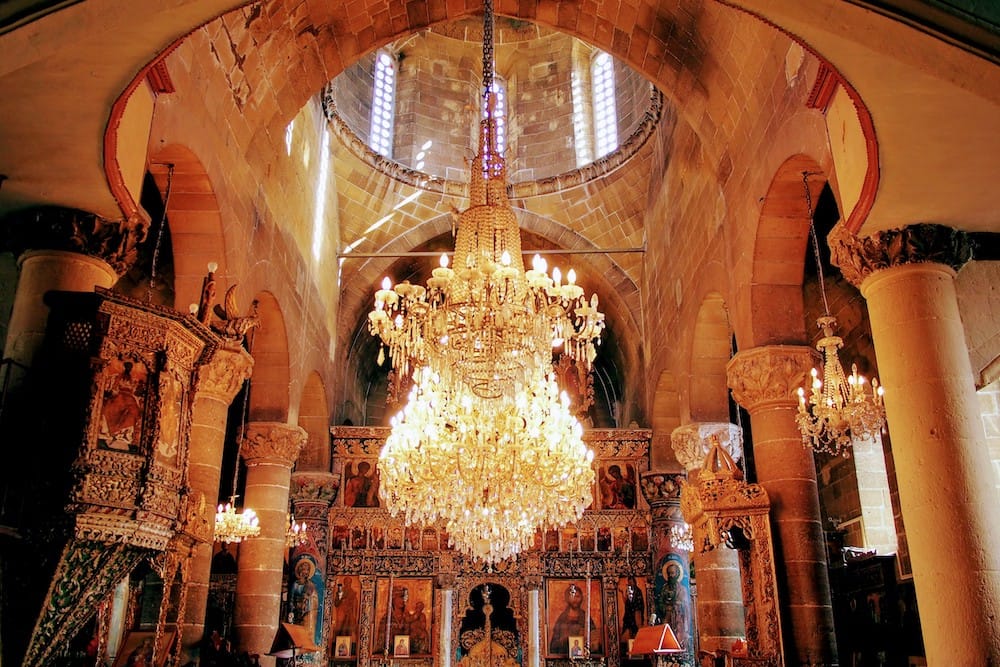
Agios Mamas Church, Güzelyurt: Beautifully Preserved Orthodox Church
Address: Ecevit Caddesi, Güzelyurt 99700
Save to Google Maps
Helped by an enormous chandelier, the interior of Agios Mamas Church in the town of Güzelyurt shimmers in splendid detail. Despite no longer being in regular use, locals have ensured the church is preserved for visitors to enjoy.
The numerous frescoes adorning most of the walls are well worth admiring, but the main attraction is the tomb of St Mamas. Underneath a flap, a perforation in the outer walls of the tomb allows a mystery, oily fluid to occasionally seep out. It was once said that this fluid has healing properties, so people now rub the fluid onto paper and bring wax representations of ailing body parts in the hope their pilgrimage will bring them relief.
Getting in: The church is kept locked, but you can request access at any time at the neighbouring Morphou Archaeology and Nature Museum (see below).
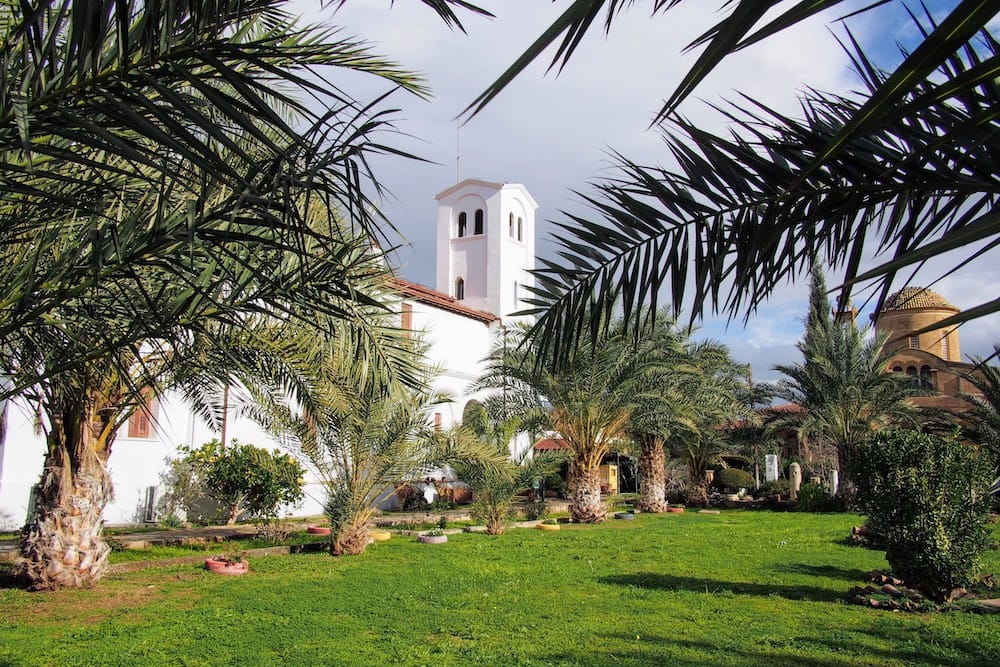
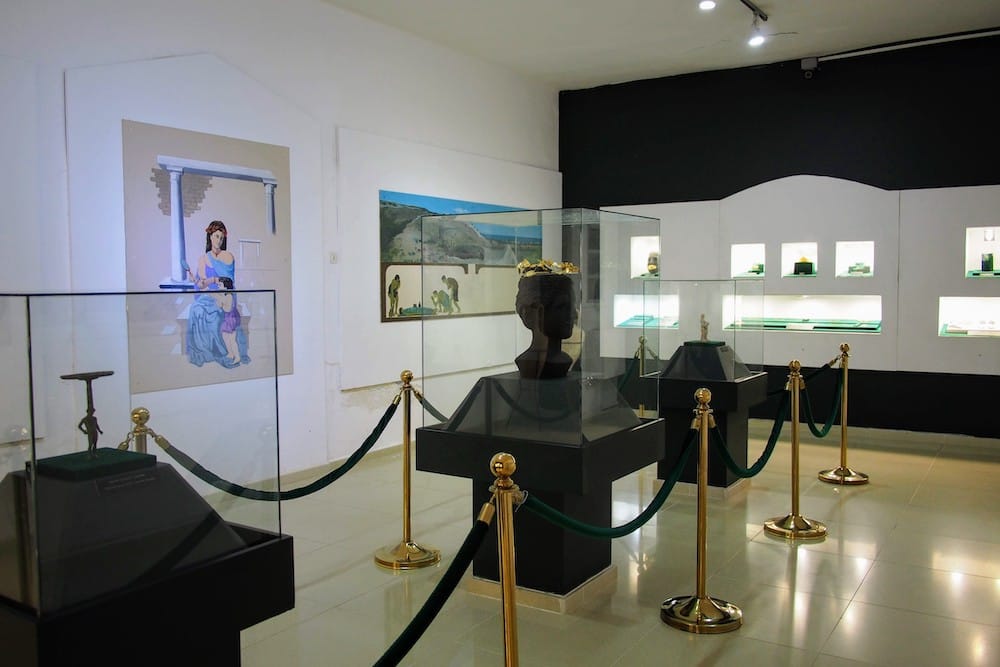
Morphou Archaeology and Nature Museum: Priceless Artefacts & Mutant Sheep
Address: Ecevit Caddesi, Güzelyurt 99700
Save to Google Maps
A small museum housing natural history exhibits on the ground floor and archaeological artefacts unearthed from the local area and particularly from nearby Soli (see below) on the first floor. The highlight of the museum is the collection of Roman-era gold jewellery, which despite only being discovered in a drain in 2005, is in almost perfect condition.
The garden surrounding the museum contains more artefacts, so make sure you take a wander after you've been inside. Also, be sure to look out for the preserved mutant sheep.
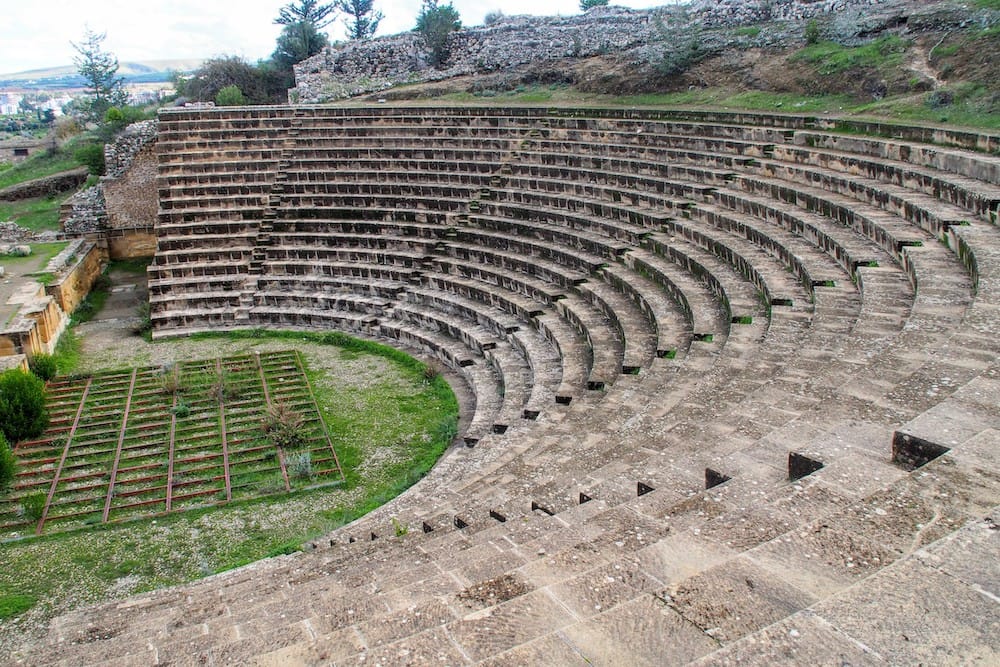
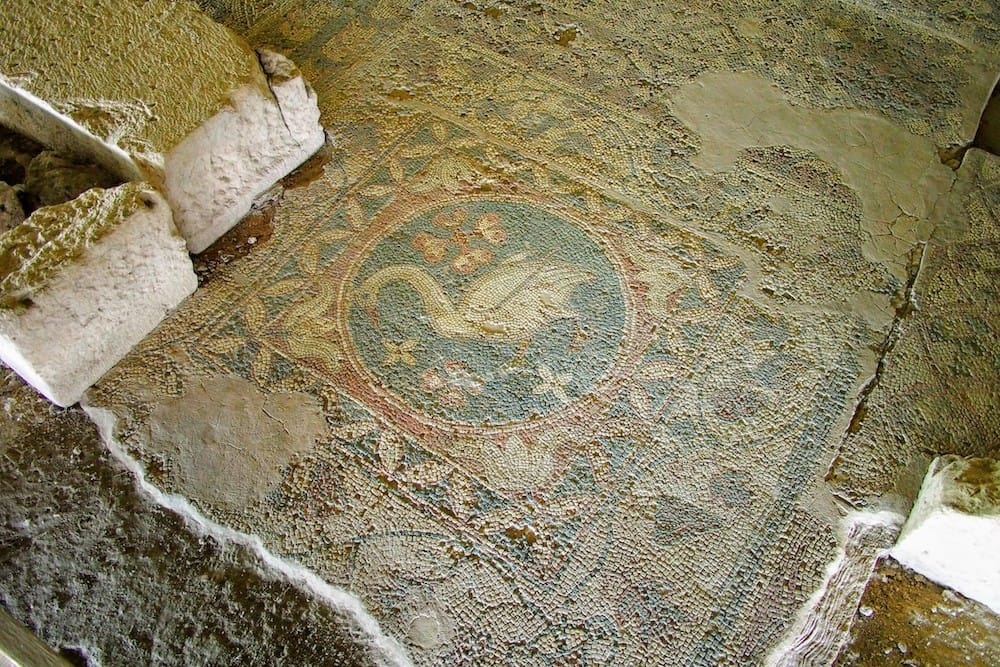
Soli: Ancient Greek City from the 6th Century BC
Address: Asaf Elmas Sk, Gemikonağı 99810
Save to Google Maps | View on Tripadvisor
Much of the ancient Greek city of Soli is still underground and awaiting further excavation. With the political situation in Cyprus at a seemingly never-ending stalemate, it may be some time before we see any more of Soli's treasures.
In the meantime, the basilica, agora and Roman theatre are visible and are well worth seeing. Protected by a huge canopy, the remains of the basilica contains ornate mosaics, the most vivid of which depicting a swan. Further up the hill, the Roman theatre has been remarkably restored to its former glory. If your visit is anything like ours, you'll have the entire place to yourself.
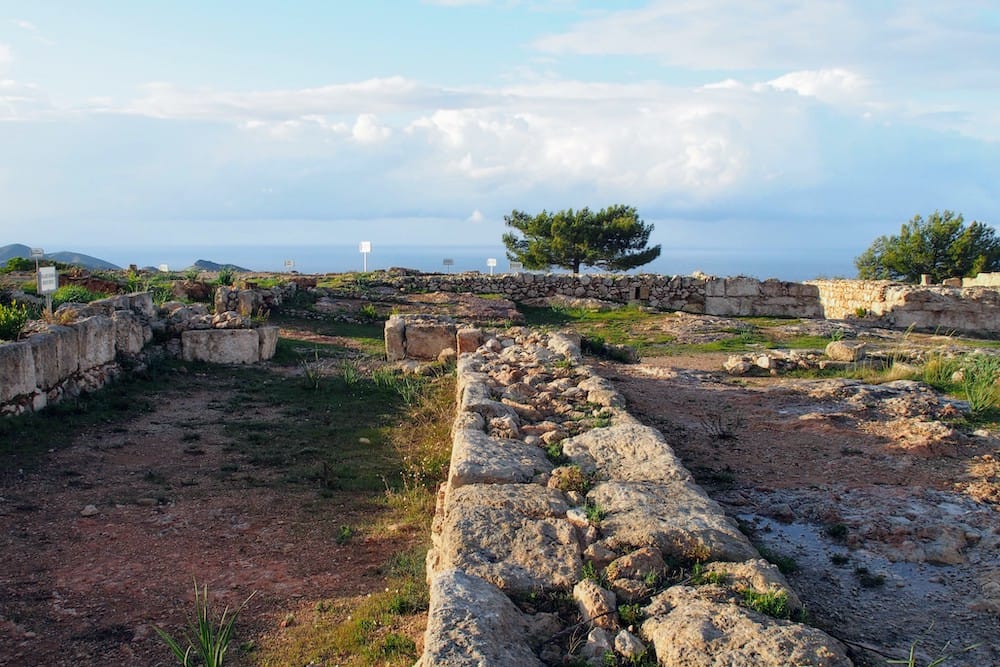
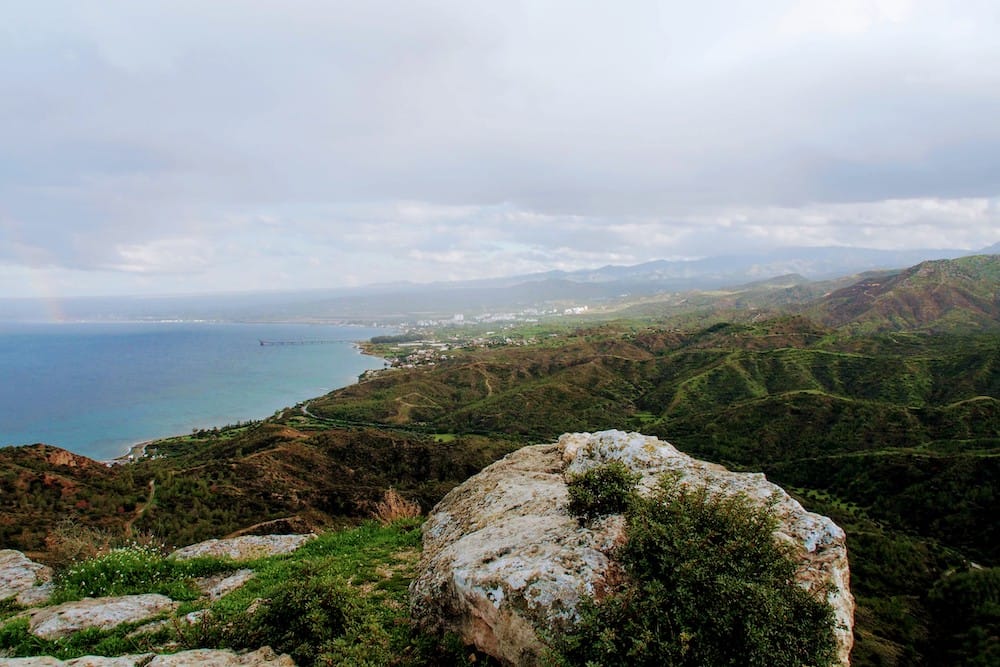
Vouni Palace: 5th Century BC Persian Settlement Remains
Address: Vuni Sk, Bademliköy 99790
Save to Google Maps | View on Tripadvisor
Further down the highway from Soli, close to where the road enters the UN Buffer Zone are the remains of the Persian Vouni Palace, from the 5th century BC. Apart from foundations and low walls, not a lot is left of this once strategically integral place. There are signs though informing you of what the rooms were, and the location itself, on a cliff top 250m above sea level, is one of the highlights of a visit here.
If you're visiting Soli, Vouni Palace is just a 15 minute drive down the road.
[htt-plan-box location="North Cyprus"]
North East: Things To See in İskele
The district of İskele is home to the Karpas peninsular, which in turn is home to very little. That though is what makes İskele worth visiting.
Whilst exploring the rest of the territory, you're never too far from human development. İskele however is unspoilt, wonderfully natural and boasts glorious stretches of undiscovered sandy beaches and many different species of reptiles and birds. Getting to the district is a bit of a drive, but those willing to put in the miles will be richly rewarded but some of the region's best natural scenery.
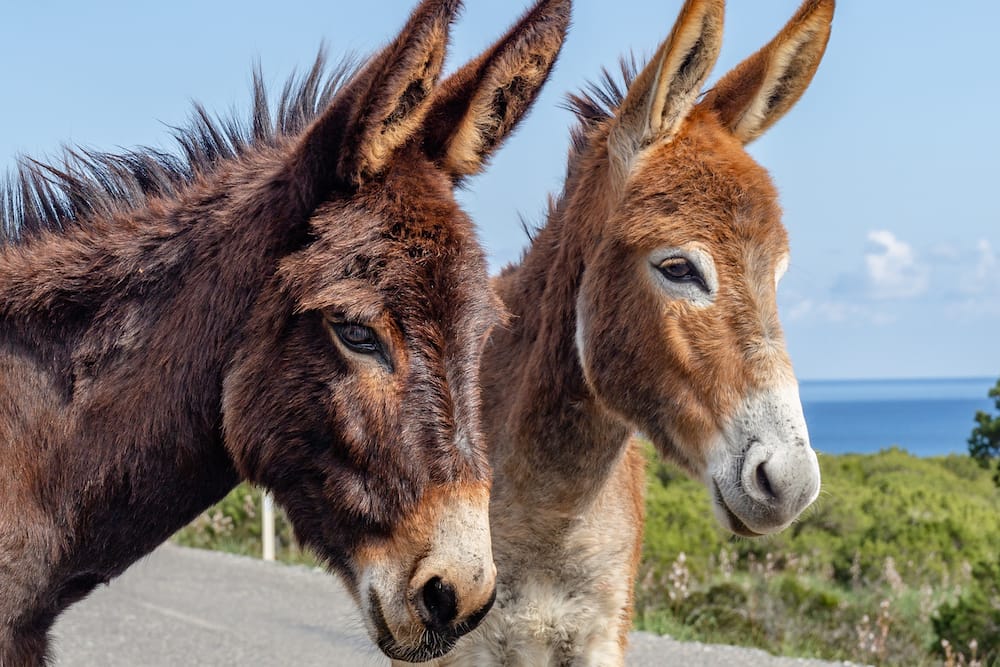
Donkeys: Free-roaming with a Love for Carrots
Across the Karpas peninsular, you are encouraged to drive carefully. Those unwilling to take such advice may find themselves in a scrape with one of approximately 1000 feral donkeys. While it might seem like these equine lovelies are native to the land, they are in fact a fairly recent addition to the natural landscape. Before 1974, Donkeys were used quite heavily to work the land. Come the arrival of Turkish forces however, they were abandoned.
Despite efforts to quell the population, their numbers have grown over the years and they now seemingly rule the peninsular. If you're wanting to make some Donkey friends, take a bags of carrots with you, though be warned - they can be a bit grumpy.
Eco Village: Protecting & Celebrating Cypriot Heritage
Address: Büyükkonuk 99870
Save to Google Maps | View Website
The village of Buyukkonuk/Komi Kebir is home to a very special project whose aim is to preserve local traditions through eco-friendly means. Concerned by the erosion of traditional methods, organisers established in 2016 the first eco village in North Cyprus. As well as regular markets selling locally-made souvenirs, there are eco-friendly fetes where you can sample local foods and enjoy Cypriot music and dancing. The village even have a pair of guesthouses for a fully immersive eco experience.
[htt-plan-box location="North Cyprus"]
South East: Things To See in Gazimağusa
The district of Gazimağusa is home to a number of North Cyprus' headline tourist attractions.
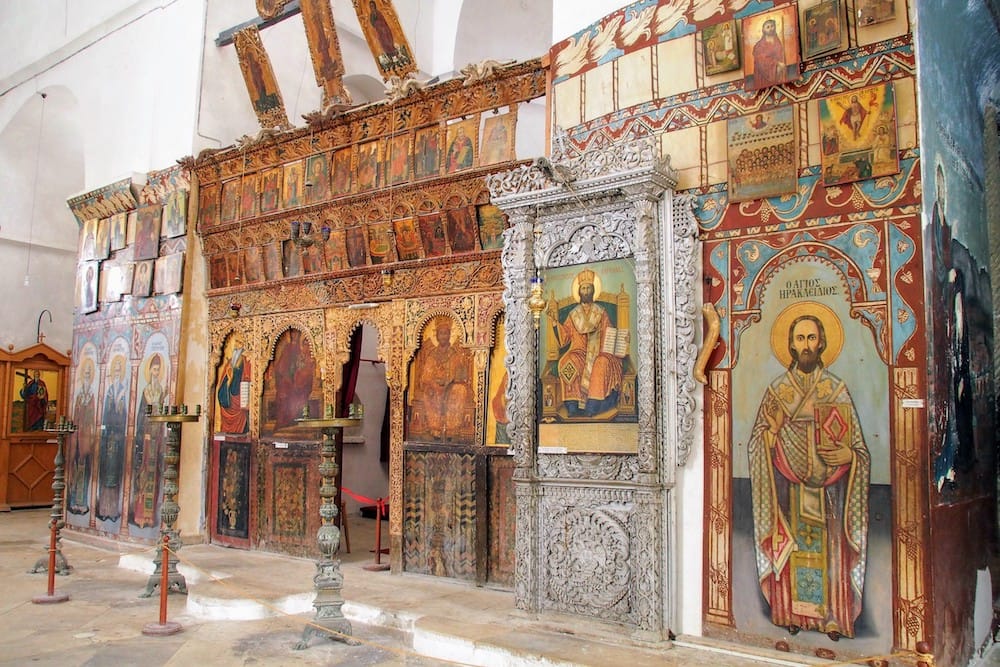
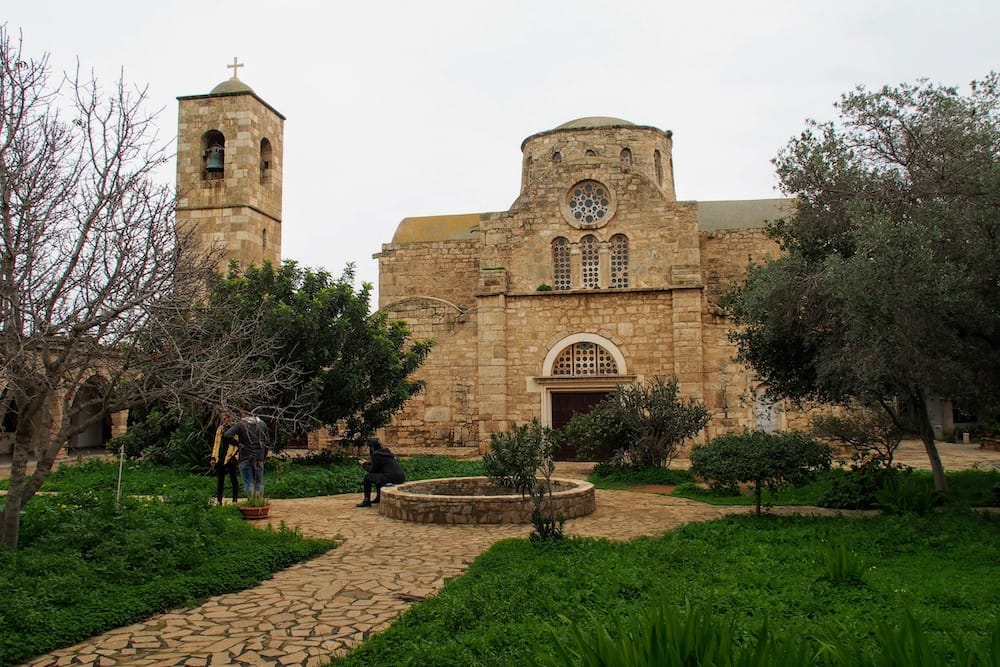
Saint Barnabas Monastery: Stunning Religious Icons & Priceless Artefacts
Address: Tuzla 99500
Save to Google Maps | View on Tripadvisor
Named after and built in honour of the patron saint of the island, Saint Barnabas Monastery is now home to a fascinating museum full of religious icons and priceless Cypriot artefacts. The icons, depicting mostly well-known religious figures are plentiful and in great condition. Inside the museum, you'll mostly find pottery and ceramics, a majority of which is still in tact. There's a small cafe on site serving light snacks, Turkish coffee, tea and freshly squeezed pomegranate juice.
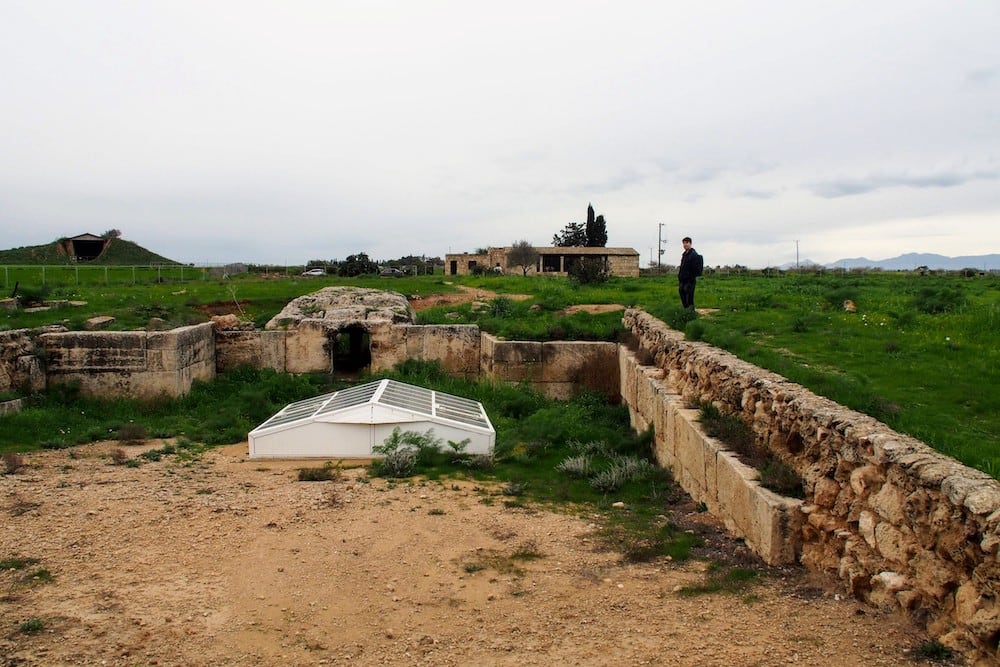
Royal Tombs: Recently Discovered 8th Century Burial Chambers
Address: Tuzla 99500
Save to Google Maps
A couple of minutes drive along the same road as Saint Barnabas Monastery are the Royal Tombs (occasionally known as the King's Tombs). Here, amidst agricultural fields, you will discover the final resting places of the royals, nobility and the well-off who lived at nearby Salamis. Only a fraction of the tombs have been excavated and regretfully, many of the riches that were buried along with the dead have been looted over the years. Some artefacts remain however and can be seen in a small on-site museum. Similar to other tourist sites in North Cyprus, you can wander about wherever you like, including inside the tombs themselves. Remarkable!

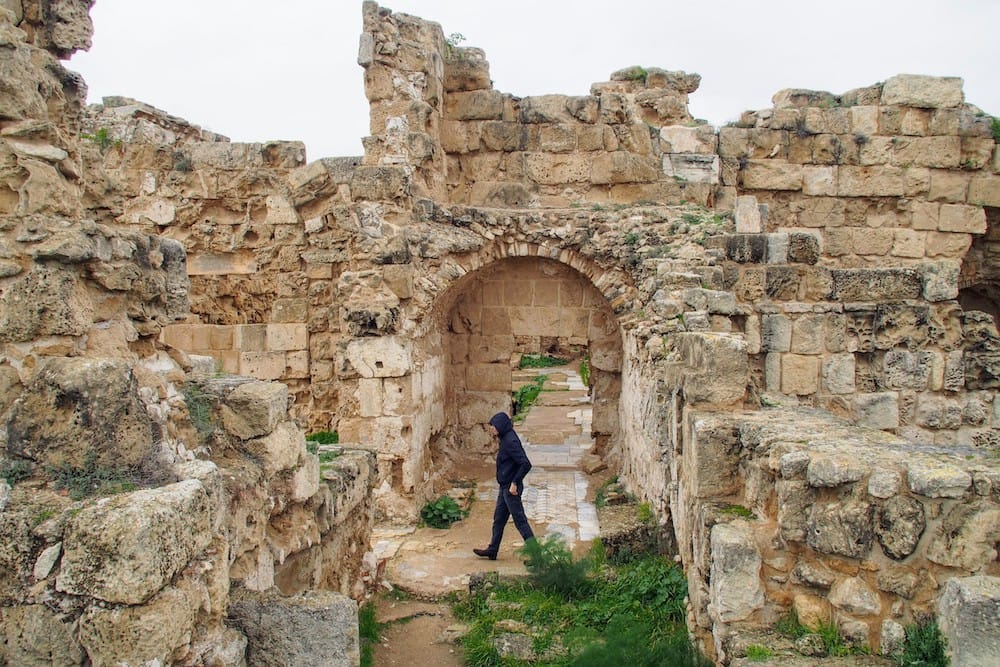


Salamis Ancient City: Incredible Ruins from Several Eras
Address: Yeni Boğaziçi 99680
Save to Google Maps | View on Tripadvisor
Having survived the occupation of the Assyrians, Egyptians, Persians, and Romans, this ancient city was eventually brought to ruins by two earthquakes in the 4th century. Although most of this Roman city is now underwater (which would make for an incredible scuba diving experience) and much of the site is yet to be excavated, there is still much to marvel at.
Highlights include the Roman columns (once the Gymnasium), the amphitheatre with a capacity of 15,000, a collection of marble headless statues (thought to have been vandalised by Christian zealots in the late Roman period) and beautiful mosaics which, remarkably, you can walk on.
Some of the archeological treasures that were found here can now be seen at the St Barnabas Monastery (above).
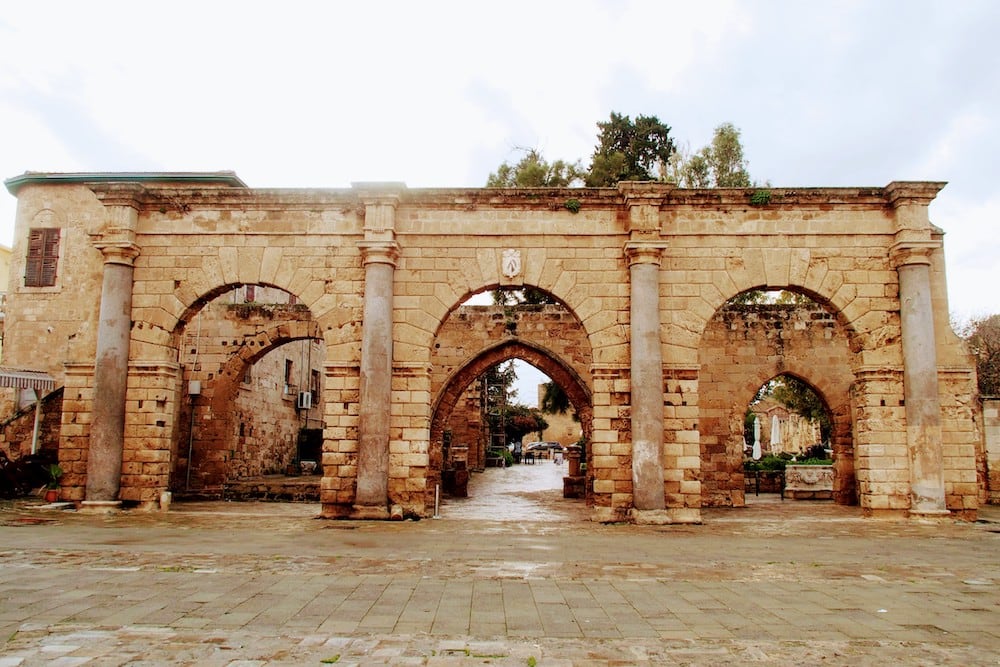
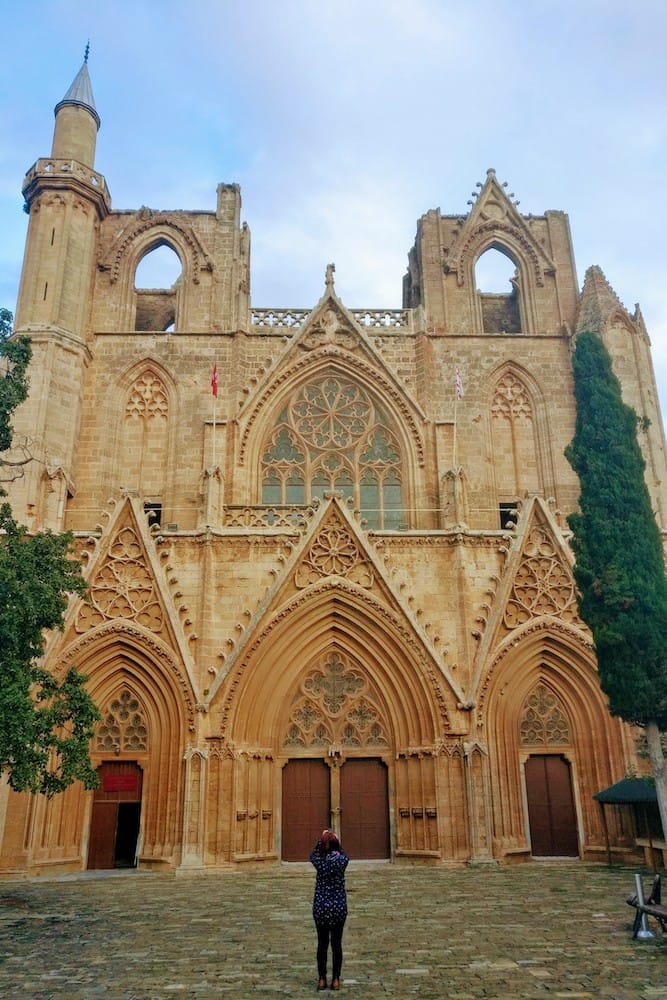
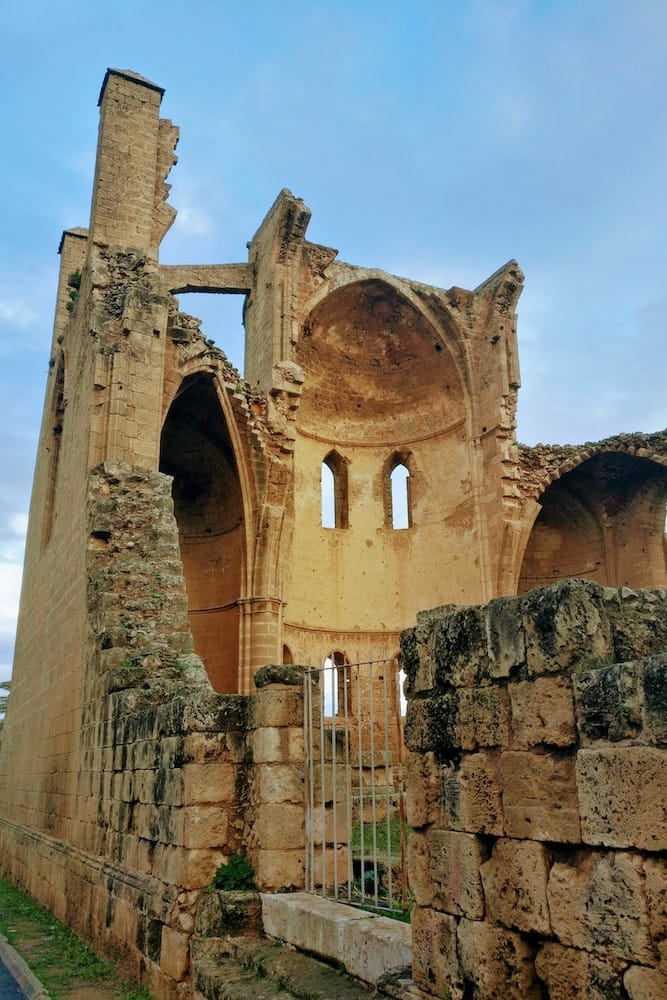
Famagusta Walled City: The District of Churches
Address: Gazimağusa 99450
Save to Google Maps
As you enter and drive through the city of Gazimağusa/Famigusta, you'd be forgiven for frowning a bit. It's not the best looking city. Keep driving however and you'll be rewarded with the Walled City.
Like most things in North Cyprus, the fortifications surrounding the old town of Famagusta have a complicated past. They were built by the Lusignan Kingdom of Cyprus in the 14th century and redesigned by the Republic of Venice in 15th and 16th centuries.
Back then, the belief that people's wealth could be measured by the churches they built inspired the merchants to have churches built in varying styles. These churches, which still exist in one form or another were the reason Famagusta came to be known as "the district of churches".
Interestingly, some of the churches, like the Cathedral of St. Nicholas, have been repurposed to serve the interests of the Muslim population. It is now a mosque and known as Lala Mustafa Pasha.
We parked outside the walls in a lay-by, but there are actually car parks inside the walled city. Simply drive across the narrow bridge and you'll see the car parks signposted. The walled city is quite compact and it's a genuine pleasure to wander about 'collecting' all the churches. There's actually stacks to see and we could go on and on about Famagusta, but we'll let you discover it on your own.
Pro tip: Reward your sightseeing efforts with tea or coffee and an enormous selection of freshly made cakes at Petek Pastahanesi (Save on Google Maps | View on Tripadvisor)
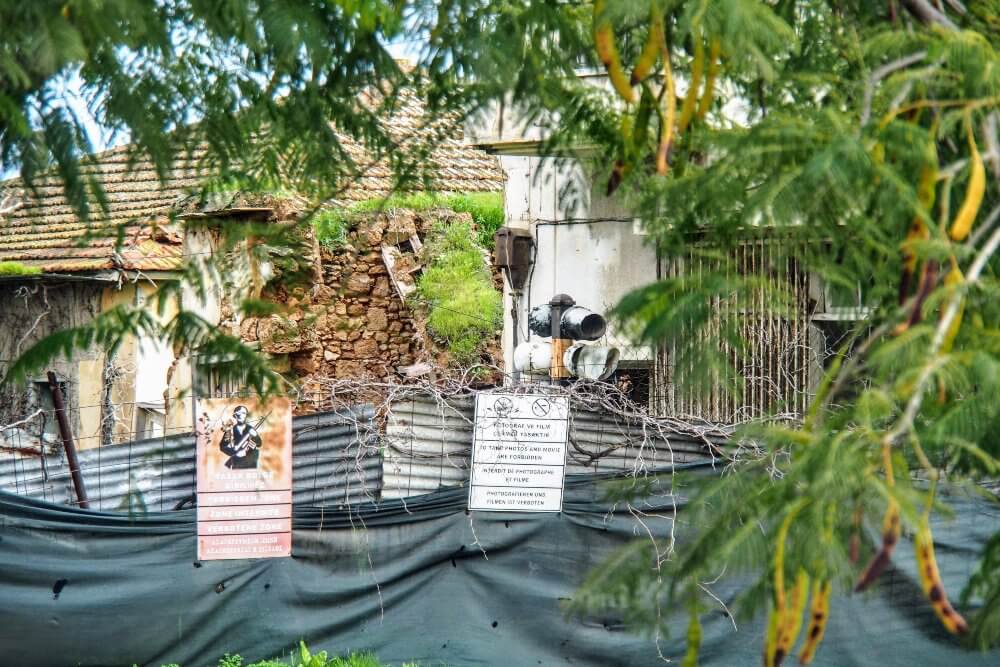
Varosha: Abandoned beach resort town caught in a time warp
Address: Kiras, Gazimağusa 99450
Save to Google Maps
If anything is an indictment of the current political situation on the island of Cyprus, it's Varosha. In the early 1970s, Varosha was the number one tourist destination in Cyprus, home to bars, restaurants, nightclubs and high-rise hotels. By 1974 however, following the arrival of Turkish forces and a mass evacuation of its population of 39,000, Varosha became a ghost town overnight and it's been that way ever since.
Today, the entire town of Varosha is sealed off by Turkish forces, caught in a literal time warp. The former five-star hotels that line the beaches, once enjoyed by the world's rich and famous are now empty and abandoned. It's truly astonishing that such a place exists in modern day Europe and, if you're curious, you can go to take a look at it for yourself.
How to View the Ghost Town of Varosha
There are a few things to note before you head off to see Varosha. The first thing to note is that Turkish forces would rather you didn't. That's not to say they'll actively try to prevent you from going, it's more to say they've made it quite difficult.
Access to the zone is completely prohibited and under constant armed guard, so don't even think about trying to get in. Additionally, don't take photos of the zone at all. There are signs up everywhere and even spray painted notices on the sides of the empty hotels. If forces suspect you're taking photos, they will come out from their posts and speak to you and possibly even arrest you. Don't think you'll get away with a quick snap either. Anyone who goes anywhere near the perimeter is monitored closely.
The best vantage point is also the only vantage point on the northern side of the buffer zone and you will need a car to get to it. You can park your car for free in the car park (Save on Google Maps) opposite the Arkin Palm Beach Hotel. Once you're parked, walk southbound along the road with the hotel on your left. Ahead, you will see very clearly some of the abandoned buildings behind barbed-wire fences. Keep heading towards them and follow signs for the Gazimağusa beach buffet restaurant.
The signs will direct you down a narrow pathway to the left between the buildings. The pathway opens onto a lovely sandy beach from which you will get a great view of the coastline of Varosha spreading out into the distance. Remarkably, the beach is flanked by abandoned hotel buildings. It's an unbelievable sight.
Just a reminder, resist the temptation to take photos. It can get you into a lot of trouble.
Plan & Book Your Visit to North Cyprus
As a result of an ongoing political dispute, planning & booking your visit to North Cyprus may not be as straightforward as it is with other European destinations. That's not to say it's difficult however. With a little help from us, we'll have you on your way in no time.
Rather not do all the planning yourself? Relax and let the experts do it for you. Head to TourRadar to discover amazing tours of North Cyprus.
Flights to North Cyprus
Ercan International Airport is the primary international airport in North Cyprus. Despite flights to the airport being internationally banned, aeroplanes do come and go, though only via Turkey.
The government of the Republic of Cyprus, who governs the area to the south of the UN buffer zone, considers anyone who has entered via Ercan airport to have entered the country illegally. This is certainly worth considering, especially if you’re keen to visit Southern Cyprus during your visit. You may encounter serious problems if you attempt to cross the border.
While you’ll find flight prices are pretty unbeatable to and from Ercan, you’ll find options with more flexibility and considerably more direct flights to and from Larnaca airport in Southern Cyprus.
All things considered, we heartily recommend flying into Larnaca, and then booking an onward transfer into North Cyprus (see below).
To find great flights into Larnaca, we recommend using Kayak.
[htt-kayak-box location="Larnaca"]
Transfers from Larnaca Airport to North Cyprus
We had pre-arranged a transfer from Larnaca airport to our hotel in North Cyprus via the Pyla/Pergamos crossing point. Starting on the Greek side, our car crossed through British Sovereign Base Area territory (land containing a British military base) and then the UN buffer zone (though you wouldn’t have necessarily noticed). Our car stopped only once at the Turkish checkpoint where our passports were inspected. Pretty uneventful.
One the way back, our passports were checked again by Turkish forces as we left. The car then stopped again as we re-entered the British Sovereign Base Area, where we were questioned by a customs official about our luggage. The questions were mildly confrontational, perhaps demonstrating the tense atmosphere between the two sides. It was certainly weird for us as Brits to be questioned so rigorously by someone effectively working for the UK government.
One important thing to remember is to keep any transfer papers with you. If you’re not asked to complete a transfer form by your transport provider, don’t worry. If you are though, keep hold of it, as you’ll be asked for it on your return journey.

Places to Stay in North Cyprus
Generally speaking, accommodation rates in North Cyprus are considerably lower than those in the rest of Europe. With this in mind, it might be worth considering smarter and more luxurious options as part of your accommodation search. A nicer room or apartment might be cheaper than you think!
During our visit to North Cyprus, we stayed at The Olive Tree Hotel (pictured above) on the outskirts of Kyrenia. We enjoyed our stay, despite the rooms looking a bit tired in places. The breakfast buffet was excellent, the outdoor villa-style room layout was pleasant and staff were helpful.
We recommend starting your search for places to stay on Tripadvisor. They compare thousands of hotel prices all at once so you don't have to.
Airbnb
There are a number of great accommodation options on Airbnb. If you've not used Airbnb before, sign-up using our code to get money off your first booking.
Tours of North Cyprus
If planning a trip to North Cyprus is a bit to much work for you, you're in luck. Relax and let the experts do all the planning for you. TourRadar collates tours from tour operators all over the world so that you can compare them and get the best prices.
It's not possible to link directly to tours of North Cyprus only, but you can find them within the tours of Cyprus as a whole. At the time of publication, there are tours of North Cyprus on foot, by bike and by bus, so head to TourRadar now to discover them.
Further Practicalities
We have created a separate post containing 15 essential things you need to know before visiting North Cyprus. It contains information concerning currency, language and safety matters.
Find out more: North Cyprus: 15 Essential Things To Know Before You Go
We hope you've found this extensive guide to North Cyprus useful and that it has helped you to plan your own visit to this fabulous territory. If you have any feedback, suggestions or questions, please get in touch using the comment form below.

